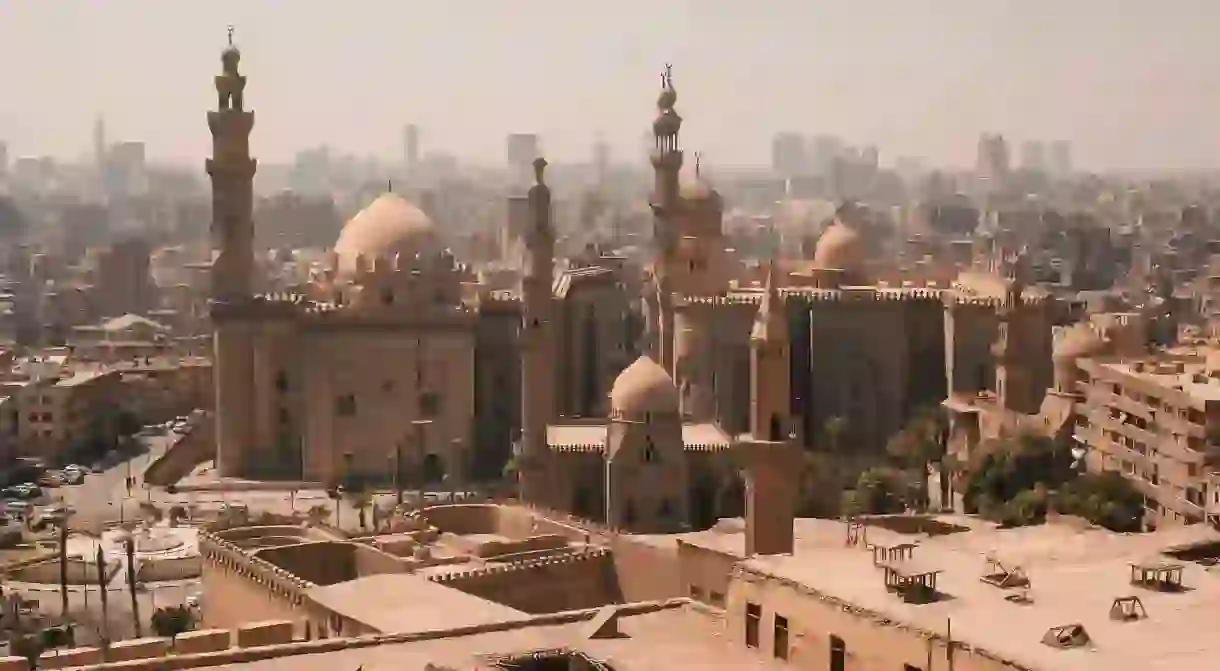The 10 Most Beautiful Mosques in Cairo

The City of a Thousand Minarets, Cairo, is home to a significant number of mosques. Mosques in Cairo are distinctive for their remarkable architecture and the fact that they have been standing for thousands of years. Here are some of the most beautiful mosques in Cairo.
Mosque of Muhammed Ali
Mosque

With a distinguished exterior and interior, the Mosque of Muhammed Ali is also known as the Alabaster Mosque. It is one of Egypt’s top tourist attractions. The mosque is situated on the Summit of Saladin Citadel, and has minarets measuring 270 feet in height – way above average! Tourists can view almost all of Cairo from above, including the Giza Plateau. The mosque was built between 1830 and 1957 by prominent architect Yussuf Bushnaq, and was commissioned by Muhammed Ali Pasha, erstwhile ruler of Egypt.
Mosque of Amr Ibn Al-As
Mosque

This is a particularly historically significant site, in that it was the first mosque to be built in Africa (641-642 CE). The mosque was home to General Amr Ibn Al-As’s tent, the commander of the Muslim army back then. It also holds the tomb of his son, Abd Allah Ibn Amr Ibn Al-As. The mosque was the first real university in the entire world, a center for learning and teaching, although it no longer serves this purpose. The site has been expanded and reconstructed over the years.
Mosque of Ibn Tulun
Mosque

In the heart of Cairo lies the oldest and largest mosque in the city, the Mosque of Ibn Tulun. It is the oldest mosque to exist in its original form, and is also the largest in terms of land. It was constructed in 879 CE, commissioned by Ahmad ibn Tulun, Egypt’s governor at the time. The historical landmark is built on Gebel Yashkur, allowing visitors to take worthy shots of Cairo from its famous staircase minaret.
Al-Rifa’i Mosque
Mosque

Right next to Sultan Hassan Mosque lies the beautiful Al-Rifa’i Mosque. It was built over 40 years, between 1869 and 1912, by the famous Egyptian engineer Hussein Fahmy Pasha. The mosque was commissioned by Khushyar Hanim, mother of Khedive Ismail Pasha, to expand the preexisting shrine of Islamic sanit Ahmed Al-Rifa’i. The mosque is home to Al-Rifa’i’s tomb, as well as many royal family members. Prayer takes place inside the mosque, despite the fact that it is against Islamic rules to pray in a mosque with tombs.
Mosque-Madrassa of Sultan Hassan
Mosque

Considered one of the largest mosques in the world, the Mosque-Madrassa of Sultan Hassan is an historical and architectural landmark not to be missed. It was built during the Mamluk Islamic era (14th century) by Sultan Hassan, famous for his lavish spending. The landmark acted as a Madrassa (school) too, beside being a site of worship. There are teaching areas in the inner courtyard for the four main schools of Sunni Islamic theology: Hanafi, Malaki, Hanbali, and Shafi’i.
Al-Hakim bi-Amr Allah Mosque
Mosque

Known for its unique minarets, Al-Hakim bi-Amr Allah Mosque is the second major Fatimid mosque in Cairo. It was built between 990 and 1012 by Caliph Aziz, and completed by his son Al-Hakim bi-Amr Allah. The mosque was influenced by the famous Ibn Tulun Mosque, which is obvious in the arches supporting the arcades of the sanctuary, as well as the courtyard. The religious site is a peaceful place visited by both tourists and locals.
Al-Azhar Mosque
Building, Mosque, University

Qalawun Complex
Building, Mosque

Built by Sultan Al-Nasir Muhammad Ibn Qalawun in the 1280s, the complex includes a school, a hospital and a mausoleum. The complex was built in 13 months, which is a relatively short time considering its structure and the scope of the total complex. Its timeless design is considered the second most beautiful mausoleum, after the Taj Mahal in India.
Aqsunqur Mosque
Building, Mosque

Al-Nasser Mohammed Mosque
Building, Mosque

Another mosque built by Sultan Al-Nasser Mohammed Ibn Qalawun in 1318, and renovated in 1334. It is a historical landmark as it lies inside the Citadel, across the street from the courtyard access to the Mosque of Muhammed Ali. It is where the sultans of Cairo used to perform their Friday prayers in its courtyard center. Despite the fact the the mosque is beautifully decorated inside, it has little-to-no decoration on the exterior.













